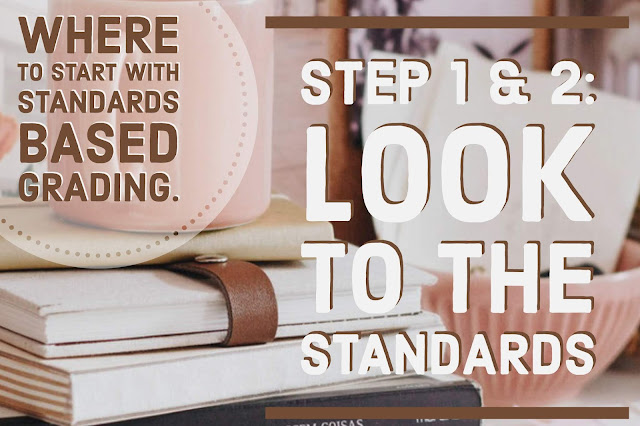Where To Start with Standards Based Grading: Steps 1 and 2
I've talked about what I do in my classroom here and here but as I prepare for the new school year I have decided to take some time to share with you all how I prepare my history and social studies content for a standards-based approach. It makes sense to share this now because even though I have done this for four semesters already, I still have changes I need to make and in doing so I plan to share some of my lessons learned and mistakes made with you all in the hopes of making this process easier for you.
Before You Get Started
It is important to first explore the terminology and determine what you believe. You can look at this grading terminology cheat sheet I created and before doing anything else I highly suggest you complete this grading philosophy form that I adapted from the work of Rick Wormeli. Changing your grading practices is not something you should do because you want to follow the trends or because it looks interesting: the amount of work and thought that goes into it requires that you have a deep understanding of your own personal grading philosophy before you begin.
Where To Begin
Start with your standards. I hated this at first because I was never the teacher who posted my objectives on the board, I was always thinking about how to add lessons from outside the standards to make the history more inclusive, diverse, or interesting but there is no way around it. You have to start this process by taking a deep dive into your standards and determining what they really mean and how you can best share that meaning with students.
Step 1: Rewrite All Your Standards in Student Friendly "I Can..." Statements
You can see me do this for AP World History and a Sheltered World History Course here. You can also see an example of what this looked like last year for a World History course (this is actually the page I shared with students at the start of the unit.) I call my student-friendly "I can.." statements the learning objectives for the course. When I start really planning, you'll see I align everything to a learning objective and students are always informed of which learning objective we are working on.
A warning: You can probably find someone who has done this work for you on TeachersPayTeachers or in a Facebook group for your content area. Don't do that. I am usually a fan of TpT and the various teacher groups I am a part of but for this process to be most successful, you need to intimately know your standards. It is daunting and intimidating so take it unit by unit and if possible find a PLC to do this work with.
Step 2: Determine Acceptable Evidence of Learning or Mastery
Once you have re-written your standards you need to determine what mastery looks like. What evidence of learning would prove to you that student was at mastery? Always start with mastery and work your way down. Does your school have Common Assessments? Use those as a starting point. Do you have assessments you feel already align with the standards? Start there. You will find a lot of what you already do fits this practice, you often just need to delineate what part of the assessment aligns with which objective and then determine how best to measure that. This is where rubrics are a huge help. It is essential you do this first if you don't have any idea what you would accept as mastery or evidence of learning you don't really know what students need to learn or do or create in class.
This process can seem daunting at first but you will find a lot of what you already do fits this model. You will also find a lot of things you are doing that are irrelevant, meaningless, and just plain busy work. When you are able to determine what those things are you can make the learning richer, deeper, and have more time to use data in your classroom in meaningful ways.
Have you tried a Standards-Based Approach? Share your best practices and resources in the comments?
Have questions? Feel free to leave a comment or reach out to me on Twitter!





Comments
Post a Comment
Thank you so much for commenting! You can also reach out to me on twitter: @mrsbyarshistory